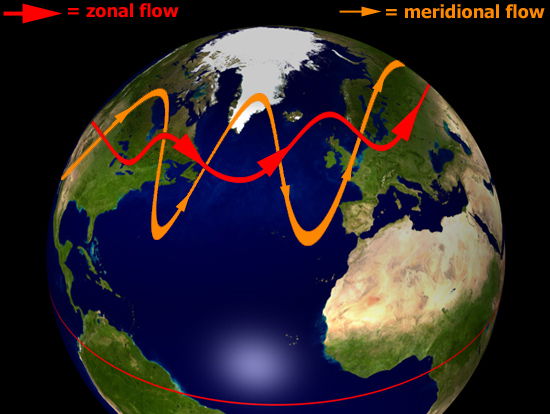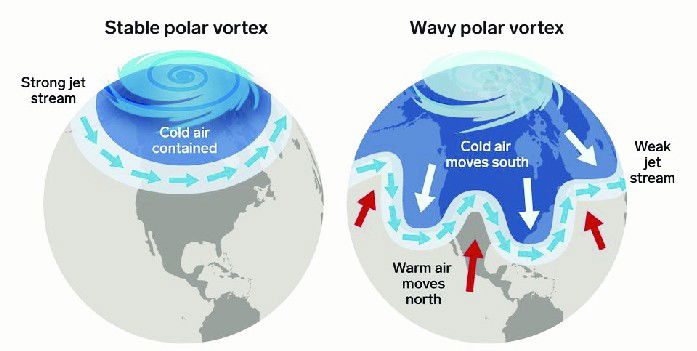How global warming triggers extreme cold
 Getty Images
Getty Images Getty Images
Getty Images· 5 min read
Scientists have suggested that global warming can lead to extreme cold and explained the processes by which it works
The average annual temperature on our planet continues to rise. 2024 was declared the warmest year on record. The Northern Hemisphere is losing snow cover in record amounts. At the same time, extreme cold continues to hit different regions of the Earth, often bringing with it the heaviest snowfalls. This increases doubts about the relevance of the problem of global warming (however, as studies show, mainly among those who were already skeptical about the idea of anthropogenic climate change). Scientists are trying to figure out how justified the doubts and general skepticism are.
Global warming is a long-term and sustainable increase in global temperature, recorded since the beginning of the industrial era. It also manifests itself in the increase in extreme events such as heat waves, fires, abnormal rainfall, droughts, tornadoes, floods, and even severe cold. All this is due to changes in the chemical composition of the atmosphere as a result of an increase in the concentration of harmful emissions in the air — carbon, methane, and others.
It is important to understand the difference between climate and weather. Climate is defined as the average weather conditions in a region (or on the entire planet) over a long period of time. At the same time, weather is the periodic fluctuations in temperature, precipitation, air pressure, and other indicators over a short period of time (days or weeks) in a particular area. Climate change on a global scale disrupts these predictable local weather patterns.
Compared to other weather cataclysms, the connection between extreme cold and global warming has been studied the least. At the same time, an analysis of the available data proves that there is a connection. Among other things, it is due to the fact that the trajectories of air mass transfer are changing and the polar vortex is weakening.
Air currents are moving air at the altitude of an aircraft. Currents that prevail in the middle latitudes (where people most often complain about severe cold) are generated by the temperature difference between the Arctic, with cold air, and the tropics, where the air is warm. The greater the difference in temperature values in the above-mentioned areas of warm and cold air, the more actively the air masses carry heat to the middle latitudes in winter. Air movements under conditions of significant temperature differences are almost parallel to latitudinal circles. Now the Arctic is warming at an accelerated rate, compared to other regions. Therefore, the gradient of temperature values is becoming less pronounced. This shifts the usual trajectories of air currents, and air transfer becomes submeridional (that is, approximately along the meridians). In this direction, it can bring both heat from more southern regions and cold from more northern or intracontinental ones.
 Latitudinal and submeridional directions of air flows (Photo: skepticalscience.com)
Latitudinal and submeridional directions of air flows (Photo: skepticalscience.com)A polar vortex (polar circular cell) is a band of winds that forms over the Arctic in winter. Usually, this vortex is fast, stable, moves counterclockwise, and surrounds cold Arctic air, trapping it at the pole. In such cases, winters in the Arctic are colder, and in the middle latitudes, milder. Sometimes the system slows down, as if splitting into two parts and stretching to the south. Cold air is “released”. Melting may begin in the Arctic, and frosts will come to the south. Scientists note that before the vortex disintegrates, warming is detected in the higher layers of the atmosphere over the Arctic, and the disintegration itself directly correlates with subsequent cold waves in the middle latitudes. The warming atmosphere is expected to continue to contribute to the weakening of the polar cell.
 Stable and “stretched” polar cell (Photo: UN Climate Change)
Stable and “stretched” polar cell (Photo: UN Climate Change)Other groups of scientists have noted that extreme cold is also affected by changes in ocean currents. An article published in the journal Communications Earth & Environment points to a connection between the slowdown of the Atlantic Meridional Circulation (AMOC) and severe frosts in the United States. According to the researchers, the AMOC usually works as follows: it moves warm water north and releases heat into the atmosphere at high latitudes. However, now, as the atmosphere warms, the waters of the World Ocean also warm, the ice in the northern latitudes melts and interferes with the AMOC current, and the circulation weakens. If the AMOC, of which the Gulf Stream is a part, slows down, the amount of heat transported north becomes less.
 AMOC (Photo: Woods Hole Oceanographic Institution)
AMOC (Photo: Woods Hole Oceanographic Institution)Scientists believe that winters will become slightly milder on average. The range of temperature extremes — from the lowest to the highest temperature — will not change in winter. This means that periodic frosts will not lose their intensity. At the same time, extreme cold waves may begin to come less often. A study by the non-profit organization Climate Central showed that since the 1970s, extremely high temperatures have become more common than extremely low ones. Now, abnormally hot days occur almost twice as often as extremely cold ones.
I believe that winters will be contrasting and contradictory, with alternating extremely warm and very cold periods, a sharp change in the nature of the weather, and an increase in the number of various kinds of dangerous and unfavorable phenomena.
illuminem Voices is a democratic space presenting the thoughts and opinions of leading Sustainability & Energy writers, their opinions do not necessarily represent those of illuminem.
illuminem briefings

Climate Change · Environmental Sustainability
illuminem briefings

Public Governance · Climate Change
illuminem briefings

Climate Change · Effects
The Guardian

Environmental Rights · Climate Change
Euronews

Climate Change · Environmental Sustainability
Associated Press

Climate Change · Environmental Sustainability